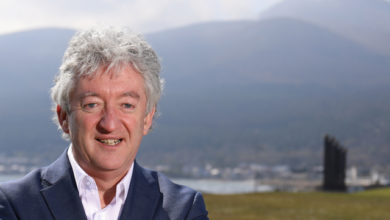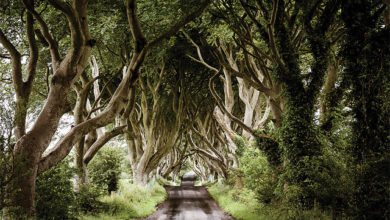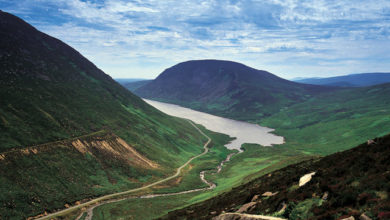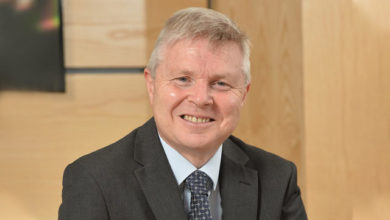Tourism: A blank canvas for technology innovation
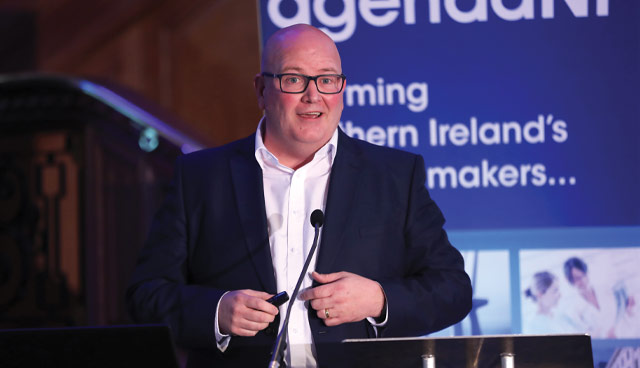
Dave Vincent, Chief Digital Officer, Tourism NI discusses the opportunity for digital to support the sector in delivering better services to potential visitors.
Discussing his role as a driver of digitally-enabled change in Northern Ireland’s tourism sector, Vincent stresses the importance of recognising the role of Tourism NI as a facilitator of improved skills and capability within the industry, rather than as a direct service provider.
“Tourism NI exists not to drive tourists to visit Northern Ireland but to service the tourism industry, uplifting their skills and their ability so that they can then sell their product,” he says.
Vincent points to the most recent statistics released for 2018 and says that key figures such as a £968 million spend, five million visitors and 16.3 million overnight stays are a massive step forward from the low base from where the tourism industry in Northern Ireland began its journey.
However, even greater ambitions out to 2050, including the doubling of the 2020 £1 billion industry target and the creation of 25,000 new jobs brings with it many challenges. Vincent understands that meeting this challenge will require an industry-wide effort and is not the challenge of the digital sector alone.
“We often talk about the digital skills challenge going forward but there’s a recognition that the hospitality skills challenge requires an even bigger effort. For example, amidst ambitions to create 25,000 new jobs we must recognise that there are currently 2,000 open jobs at the moment. As we begin our journey towards 2050, we are seeking to work together as an industry to create a service industry that people value as a career choice and want to be part of.”
Both the digital and creative sectors in Northern Ireland have a huge role to play in this regard, according to Vincent. Turning specifically back to the challenges facing Tourism NI, Vincent admits the absence of detailed data on where visitors to Northern Ireland go when they arrive in the region.
“Some of the tourism sector know these numbers in isolation. For example, the hotels know and the attractions know their own impact but there is no aggregation. Without aggregation there is no ability to understand where people are and so no ability to impact their behaviour and ultimately to attract them to spend more.”
Vincent suggests that the cumulation of joined-up data on visitors is a key driver of not only policy setting but also for investment levels and the enabling of the industry to develop tailored services and experiences.
To this end, Tourism NI’s digital arm is working to three strategic themes. The first is around understanding, establishing where visitors are and how best to interact with them. The second is dispersal and sustainability, managing and developing attractions to ensure that they meet expectations for the long-term and also encouraging visitors to explore wider than the main attractions. “If we know where they are and what they are interested in then we have some chance of actually influencing their behaviour and getting them out to these places, where they will spend in the local economy.”
The third theme outlined by Vincent is that of taking advantage of the huge swell of screen tourists visiting Northern Ireland. Discussing the development of experience animation to enhance films scenes across Northern Ireland, Vincent states that work is also underway to support local economies to see a return from animation solutions going forward.
Setting these themes out as the context for tourism in Northern Ireland’s digital journey, Vincent stresses that the challenge is not one for Tourism NI to tackle alone but instead is a collective challenge for the sector. In fact, he highlights how the organisation has itself shifted its focus in recent years from being inward looking to realising their role as thought leader to the industry and supporters of “lighthouse projects” to stimulate further innovation.
How best to support innovation is being tackled by a number of key initiatives, according to Vincent, including:
- outlining challenge areas;
- exploring use cases;
- providing seed funding;
- generating networking opportunities;
- encouraging collaboration; and
- enabling design-thinking
Vincent believes that Tourism NI has put its money where its mouth is in terms of developing digital tourism. Through challenges such as those around AI and augmented reality (AR), Tourism NI has been able to bring together the public sector, industry, traditional technology companies and the creative sector to produce problem solving innovation for potential industry-wide rollout.
Data
“Data is a massive thing for all of us,” states Vincent. “We have been spending a lot of time not thinking about technology, nor whether the data we are collecting answers the questions that we have always asked but instead focussing on how we aggregate data across the sector and how do we put it all together.
Without aggregation there is no ability to understand where people are and so no ability to impact their behaviour and ultimately to attract them to spend more.
“For example, if you think of the 151 cruise ships coming into Northern Ireland, meaning around 3,000 people per ship, if you can have a detailed map, via data, of the buses, the events, experience opening hours, flight times and where those flights are coming in to, then you can start to understand the flow of people in to the region and use this to inform our industry. They in turn can buy into that by tailoring their offering and adjusting their schedules to get maximum benefit from demand.”
Vincent outlines that Tourism NI is building a tourism data hub and data analytics platform and has issued a plea to the public sector to support their ambitions through efficient sharing of data. This data, he explains, can not only enhance visitor experience through the likes of traffic suggestions or alternative activity suggestion but could also help resolve tourism’s “big issues”. “Regional and seasonal dispersal is a key element of our Tourism Strategy,” says Vincent. “To encourage tourists to stay longer and spend more and ensure that all communities in Northern Ireland benefit from the growth of tourism.
“It will also allow our industry to establish the identity of our visitors. Knowing what sort of traveller they are, which market segment they fit into and being able to communicate with them will be of great benefit.”
However, Vincent acknowledges that in order to make full use of such data, the tourism sector must provide a product that will justify and entice the sharing of data by visitors.
Discussing a current prototype which integrates AI and machine learning into a visitor centric platform, currently focussed on Belfast, Vincent outlines a desire to see a “Netflix model” of visitor personalisation rolled out at scale.
As Vincent outlines, serious progress is already being made on the digital side of tourism, pointing to experiences being enhanced through digital such as animation at Armagh planetarium, wayfinding on the Glider and audio tours in St Anne’s Cathedral. However, he is optimistic for further innovation.
Putting a challenge back to industry he says: “We have been working to stimulate the industry and to uplift the current products on offer. However, we have been disappointed by some of the returns we have got in setting out various challenges by their quality and the ambitions of local organisations.
“I think there is a real opportunity for us to think differently about how we use technology and engage with it, not just in tourism but across the public sector, to drive change in our economy. We will continue to facilitate our industry to lift their eyes up and put the user experience at the heart of their ambitions. Technology and digital can help deliver a step change in that experience.”

